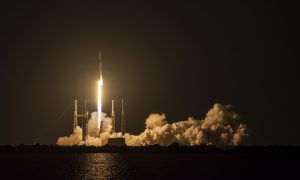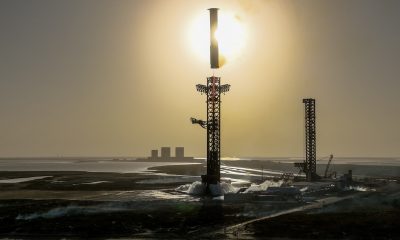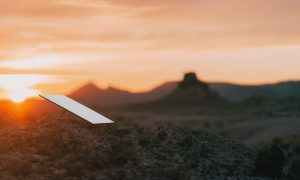News
SpaceX will transport a deadly bacteria to the space station for study
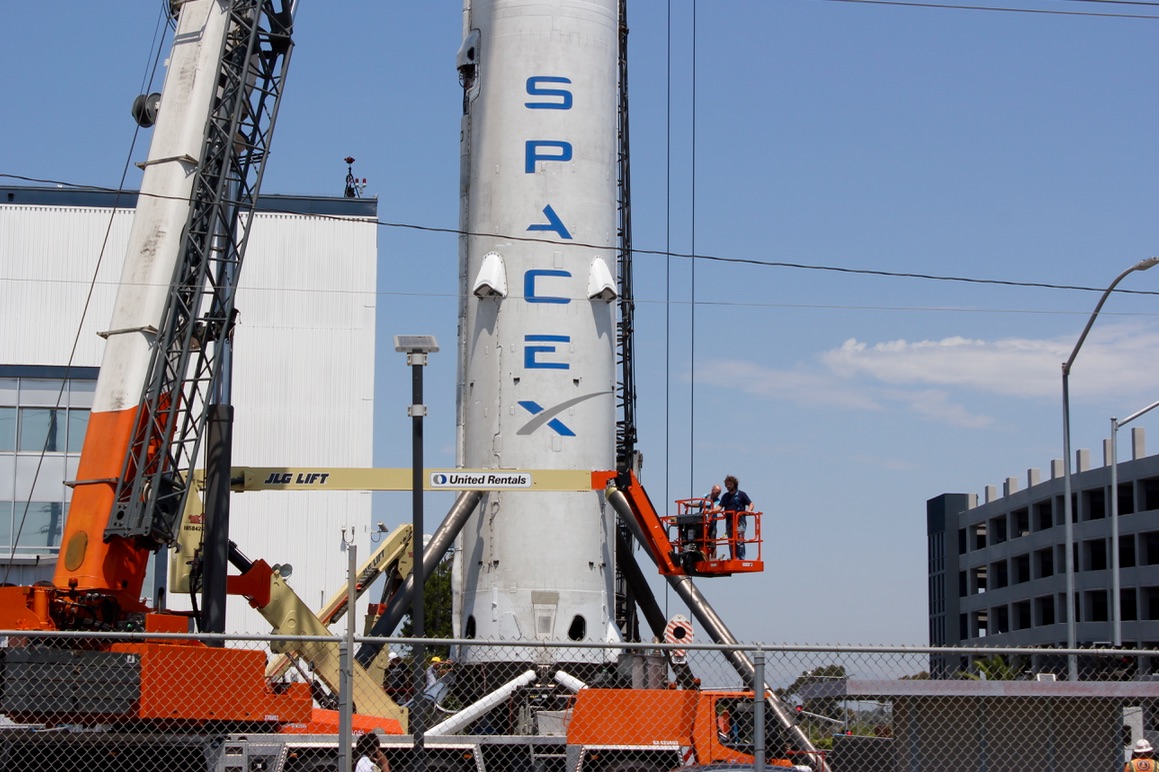
A deadly Superbug that’s incredibly resistant to current antibiotics will be part of an upcoming SpaceX mission.
Sponsored by NASA and the Center for the Advancement of Science in Space (CASIS), SpaceX will launch a lethal pathogen into space and deliver it to the International Space Station (ISS) in a near-zero gravity experiment to assess accelerated mutation rates of methicillin-resistant staphylococcus aureus, or MRSA. Outer space offers an entirely different environment than earth, so the study can see if mutation patterns will occur in space that have not yet happened on earth. Of particular interest are gene expression and mutation patterns.
MRSA is the cause of infections in hospitalized patients that happen frequently and are very difficult to cure. The ISS microgravity study will be overseen by Dr. Anita Goel, who is a world-renowned expert and pioneer in the emerging field of nanobiophysics. This field examines the intersection of physics, nanotechnology, and biomedicine. Her particular area of interest is how open systems such as life and living systems are strongly intertwined with their environment.
Calling the work on the ISS both “very practical and fundamental,” Dr. Goel’s research is directed toward better prediction of drug resistance and, as a result, smarter drugs. She is especially looking at what she describes as how “the environment can deeply influence the information flow from both the genome and transcriptome.”
The ISS study is quite significant in its potential implications for medicine and drug development. Medical practitioners have a hard time treating many infections due to the current need to first observe the pathogens’ progress, which can be quite elusive, and then treat afterward. The wait-and-see scenario often lets the MRSA get too far ahead. As a result, many of today’s antimicrobial therapies are ineffective, so the ISS study will allow important observation of MRSA patterns of resistance as they occur as well as in their various stages.
Goel and her team will draw upon the very different ISS environment to track MRSA’s activity as it moves from gene expression to mutations, with the goal to predict what might or might not happen with the same process back on earth. Drug development and molecular identification may result, which can help in the fight against future MRSA strains.
Dr. Goel, who is chairperson and CEO of Nanobiosym, won the first XPRIZE in Healthcare for the Gene-RADAR® technology. This is a mobile Tricorder that offers real-time diagnosis of any disease with a genetic fingerprint. It costs about ten times less than comparable diagnostic tests on the market today.
Source: Forbes
Elon Musk
Tesla CEO Elon Musk confirms time spent with DOGE will drop ‘significantly’
Musk said he will likely remain with DOGE until the end of President Trump’s term, but would scale back his work ‘significantly’ to focus on Tesla.

Tesla CEO Elon Musk confirmed today during the company’s Q1 2025 Earnings Call that his time allocation to the Department of Government Efficiency (DOGE) will drop “significantly,” as he will now turn more of his attention back to the automaker.
“I believe the right thing to do is to fight the waste and fraud and get the country back on track…I think it’s critical work,” Musk said on the call, before stating that his time allocation to DOGE would drop back considerably in May.
Musk said that just one or two days per week would be spent tending to government affairs. The remainder of his time will be dedicated to Tesla’s efforts, which, in the near term, include the launch of the Cybercab, a Robotaxi platform in Austin, and several affordable models that will be available in the first half of the year.
🚨 BREAKING: Elon Musk announces his work with DOGE “mostly done”:
“I believe the right thing to do is to fight the waste and fraud and get the country back on track…I think it’s critical work.”
He confirms that his time allocation to DOGE will drop “significantly,” but does… pic.twitter.com/KmUrETGIwA
— TESLARATI (@Teslarati) April 22, 2025
Musk clarified that he would likely remain on the DOGE team for the remainder of President Trump’s term, but he will be significantly less focused on the government, and more attention will be spent toward Tesla.
It’s a big sigh of relief for Tesla investors and analysts, as many, including Wedbush’s Dan Ives, said that a move needed to be made or the company could continue to feel the significant ramifications of Musk’s lack of attention.
This is a developing story. Please check back for updates.
Investor's Corner
LIVE BLOG: Tesla (TSLA) Q1 2025 Company Update and earnings call
The following are live updates from Tesla’s Q1 2025 earnings call.

Tesla’s (NASDAQ:TSLA) Q1 2025 earnings call comes on the heels of the company’s Q1 2025 Update, which was released after the closing bell on April 22, 2025.
Tesla’s Q1 2025 Results:
- Total Revenues: $19.3 billion
- Total automotive revenues: $13.967 billion
- Total GAAP gross margin: 16.3%
- Gross Profit: $3.15 billion
- EPS non-GAAP: $0.27 per share
- Free cash flow: $664 million
The following are live updates from Tesla’s Q1 2025 earnings call. I will be updating this article in real time, so please keep refreshing the page to view the latest updates on this story.
16:20 CT – Hello, and happy earnings day to everyone! While Tesla missed the Street’s expectations, the stock has not shown its typical volatility at all. That being said, this earnings call is quite interesting due to the upcoming “Company Update.”
Tesla also reiterated its section about new vehicles that “remain on track for start of production in the first half of 2025” in its Update Letter. What are these vehicles? Just variants of the Model 3 or Model Y? Was the Cybertruck LR RWD one of them already? Or are they actually new cars that we’ve just never seen before?
Either way, ten minutes and counting.
16:27 CT – Now I’m just curious if the Company Update will be a video. The thumbnail Tesla is using on X and YouTube shows an “Audio Webcast Only” graphic though. Three minutes and counting.
16:28 CT – And there’s the music. Wonder if it’s going to be on time.
16:34 CT – Annd we’re now on the Elon time threshold. Tesla stock is actually up 4% in after-hours today. Pretty nutty considering that the Q1 earnings are a miss.
16:36 CT – The earnings call is formally starting. Here we go.
Elon Musk takes the stage. “There’s never dull moment these days,” he said. He admits to the blowback from his work with DOGE. He also admitted that those against DOGE are bound to attack him and his companies, such as Tesla. Musk reiterates his belief that it’s important to fight waste and fraud. “I think it’s critical work,” Musk said.
16:40 CT – Musk discusses the protests against Tesla. He alleges that the protests are not organic. “The actual reason for the protests is that those who are receiving the waste and fraud want to continue receiving the waste and fraud,” he said.
Musk notes that starting next month, in May, his time allocation for DOGE will drop significantly. He will continue to spend a day or two on government matters or as long as the U.S. President wishes him to. “Starting next month, I will be allocating more of my time with Tesla,” Musk stated.
16:43 CT – Musk noted that Tesla is no stranger to challenges, but Tesla has been through the ringer several times in the past. “We’re not on the ragged edge of death….not even close,” he said.
He also highlighted that Tesla is on the cusp of autonomous cars and autonomous humanoid robots. Musk expects unexpected bumps this year, but he remains confident on the future of Tesla. The idea of Tesla potentially being the most valuable company in the world by far was reiterated. “Maybe as valuable than the next five companies combined,” he said.
“We expect to be selling fully autonomous rides in June in August,” Musk stated. He also stated that autonomy in cars will affect the bottom line by mid-2026.
16:47 CT – Musk discusses Tesla’s supply chain, highlighting that Tesla is the least affected automaker by the Trump tariffs. That being said, Tesla has been working to localize its supply chains for years. He admitted that tariffs are tough on companies where the margins are so low. Musk also clarified that he continues to advocate for lower tariffs, but that’s all he can do. Trump has the decision.
“The tariff decision is entirely up to the President of the United States. I will weigh in on the decision, but its primarily up to the President. I continue to advocate for lower tariffs rather than higher tariffs,” Musk said.
16:50 CT – Musk noted that he would now explain why he is very excited for Tesla’s future. He noted that Tesla is laser-focused on bringing autonomy in June in Austin, Texas. He highlights Tesla’s general approach to autonomy.
“We have a general solution (to autonomy) rather than a specific solution,” Musk said.
He also noted that Tesla expects to use thousands of Optimus robots in its factories this year. He expects Optimus’ ramp would be one of the fastest. By 2030, or 2029, a million Optimus per year is plausible.
16:52 CT – Musk highlighted that the Tesla Energy unit is doing very well. “We expect the stationary energy storage to scale to terawatts per year,” he said.
16:54 CT – Musk stated that Tesla chose to update the Model Y in Q1 because the first quarter tends to be the weakest. People do not usually buy a lot of cars in winter, after all. He highlighted that the Model Y is the world’s best-selling cars.
“We picked Q1 to cut over to the production of the new Model Y…at the same time in factories across the world,” Musk stated, adding that, “In conclusion, while there are many headwinds, the future of Tesla is brighter than ever.”
He thanks the Tesla team and stated that he is looking forward to leading the team.
16:56 CT – Tesla CFO Vaibhav Taneja takes the stage. He explained the company’s reduced vehicle deliveries, which were caused by the changeover to the new Model Y across its factories. He also noted that the negative effects of vandalism and unwarranted hostility towards Tesla and its staff affected sales in some areas.
The CFO noted that even with these challenges, Tesla was able to sell out legacy Model Y in Q1. “We have an extremely competitive vehicle lineup and after that we have FSD,” he said.
17:03 CT – Taneja noted that the Powerwall 3 has been received well by customers and Tesla is currently supply constrained.
He also discusses the effects of tariffs, though he highlighted that Tesla is a very American automaker. Tesla is not immune to the tariffs, but the company could navigate the challenging landscape better than other automakers. That said, Tesla’s US lineup complies with USMCA by 85%. The company is working on non-China battery suppliers as well.
17:06 CT – Say Questions begin. First up is a question about the highest risk items on the critical path to robotaxi launch and scaling. Elon stated that robotaxis in June in Austin will be comprised of a Model Y fleet.
“Teslas that will be fully autonomous in Austin will be Model Ys,” Musk said, adding that Tesla’s paid autonomous rides will be coming to other cities later this year. “I predict there will be millions of Teslas operating fully autonomously in the second half of next year [in the US].”
Musk did state that there will be some localized parameters for Tesla’s paid autonomous rides in different regions, like snowy areas. A good driver in California won’t be as good in the middle of a blizzard in winter, after all.
17:09 CT – Ashok Elluswamy, VP of Autopilot/AI Software at Tesla, noted that localized parameters still follow Tesla’s general approach to autonomous cars. He also highlighted that validation is still critical for robotaxi operations. In Tesla’s factories today alone, there could be many days without interventions, making it hard to figure out if FSD Unsupervised is working as intended.
Musk and Taneja joked that Tesla customers in China are really pushing FSD to its limits. People in China “putting [FSD] to the real test,” Musk stated.
Cybercab is also in sample validation now, and it’s still scheduled for production next year.
17:12 CT – Another question is asked, this time about when FSD Unsupervised will be released. “Before the end of this year” in the United States, Musk stated, adding that FSD Unsupervised must be meaningfully safer than human drivers before it is released.
17:15 CT – A question about Tesla’s new cheaper models is asked, and if the company is focused on simplified versions to enhance affordability, similar to the RWD Cybertruck.
Tesla VP of Vehicle Engineering Lars Moravy noted that these cheaper vehicles are still on track. The ramp is slower than we hoped but nothing is blocking the company from initial production.
17:21 CT – Another question is asked, this time about how FSD Unsupervised will compete against Waymo’s offering, especially regarding pricing, geofencing and regulatory flexibility.
“The issue with Waymo’s cars is that it cost waayy more money,” Musk joked. He also stated that Teslas cost a quarter or 20% what a Waymo cost, and the company’s vehicles are made in large volume.
Musk predicts 99% market share for robotaxi unless other companies can deploy the same amount of vehicles on the roads as Tesla. “I don’t see anyone being able to compete with Tesla at present,” he stated.
By the end of the year Musk is confident that the Model Y will drive itself all the way to the customer autonomously from the factory.
17:25 CT – A question about the unboxed method and how that is progressing was also asked. Tesla notes that the company’s unboxed process is progressing. “You’ll see it on tests and roads in the coming months.” Tesla is also focused on improving the method, like marrying sub-assembly areas together. “This is a revolutionary production system,” Musk noted.
When describing the Cybercab line, Musk stated that “it will ultimately achieve a cycle time of 5 seconds or less.” So far, Tesla is fastest at 33 seconds in Giga Shanghai.
17:29 CT – A question about tariffs and political biases was asked. The executives noted that Tesla is very localized already. Localization for Tesla is 85% in North America and 95% in China. “We’re ridiculously vertically integrated,” Musk stated.
Tesla makes lithium, cathode and cells. Only thing left is the anode. Musk also stated that Tesla’s in-house cells are the most competitive.
17:34 CT – A question was asked if Tesla has battery supply constraints. Tesla executives noted that while tariffs pose a challenge, Tesla is prepared to face it. Tesla is also not battery constrained for vehicles.
17:36 CT – Another question was asked, this one about “brand damage.” Executives highlighted that Q1 was all about the new Model Y changeover, and the company is still dominating its segments. “Tesla is not immune to the macro demand for cars,” executives noted.
17:39 CT – A question is asked about Optimus’ production line. Musk noted that Optimus is still in development, so most of its production will be at the end of the year. He also noted that most things for Optimus production is new, so it’s ramp has its challenges.
Musk noted that Optimus is affected by the Trump administration’s tariffs against China since the humanoid robot uses robots from the country. Elon Musk also reiterated the idea that Tesla will produce 5,000 Optimus robots this year.
17:40 CT – Analyst questions begin. Pierre Ferragu of New Street Research discussed the market share of Tesla’s cars. Musk noted that “the reality is in the future most people aren’t going to buy cars.” The CEO recalled that when the iPhone came out, veteran phone makers like Nokia opted to continue making legacy products. Consumers, however, wanted the most intelligent product available.
17:43 CT – Emmanuel Rosner from Wolfe asked about the FSD and its required number of human interventions. What still needs to happen for FSD to be Unsupervised? Tesla noted that it is aware of aware of the interventions happening in public FSD, and the robotaxi service rolling out in a couple of months will be focused on key areas. “We really working through a long tail of unusual interventions,” Tesla executives noted.
When asked if Tesla will need remote operators, Tesla noted that the robotaxi service in Austin will use use them, but only if absolutely needed.
17:46 CT – Edison from Deutsche Bank asked how Optimus’ supply chain will look like. Musk noted that Tesla is focused on localization, especially considering geopolitical uncertainty. The analyst followed up with the number of robotaxis in Austin in June. Musk noted that Day 1, there will probably be 10 cars to observe.
17:49 CT – A Cannaccord analyst asked about FSD pricing. Tesla executives noted that people who bought FSD typically believe that FSD is too cheap, especially its monthly subscription. Granted, FSD is insistent that drivers pay attention to the road, which affects the pricing. But when FSD is already fully unsupervised, that monthly fee will feel very affordable.
When asked about the Indian market, Tesla explained that India is a very hard market because of its taxes.
17:53 CT – Colin Langan from Wells Fargo asked about Tesla’s vision based approach and how the company plans to get around issues like sun glare and dust. Musk noted that Tesla uses Direct Photon Counting to see clearly through fog, dust, and sun glare. With this, Teslas can drive directly facing the sun or in extremely dark environments.
The analyst asked if the affordable cars will just be a cheaper Model Y. In response, Lars Moravy noted that Tesla is using its existing lines, limiting the design of the cheaper model. The new cars will depend on existing lines, so least their form factor will be familiar.
17:57 CT – Adam Jonas of Morgan Stanley asked about the Trump tariffs. Musk highlighted that he is just one of many advisers, and he does not make decisions. “I am an advocate for predictive tariff structures,” Musk noted.
As a follow up, Jonas asked if Musk believes the US or China is ahead in the development of AI humanoids and drones. Musk laughed and noted that it’s obvious which one is ahead in drones. America sadly cannot manufacture its own drones, and China holds a notable amount of the supply chain. Musk highlighted that US should not depend so much on China to make drones.
He noted that Tesla and SpaceX will be at the top of companies’ rankings, but he is apprehensive that ranks 1 through 10 will all be Chinese companies.
18:02 CT – And that wraps up Tesla’s Q1 Company Update and earnings call! Tesla really answered a lot of questions in this call, making it one of the longest Q&A sessions to date.
With that, till the next time, everyone!
Tesla’s livestream of its Q1 2025 Company Update and earnings call can be viewed below.
Investor's Corner
Tesla (TSLA) releases first quarter 2025 earnings results
Tesla’s quarter-end cash, cash equivalents and investments stand at a healthy $37 billion.
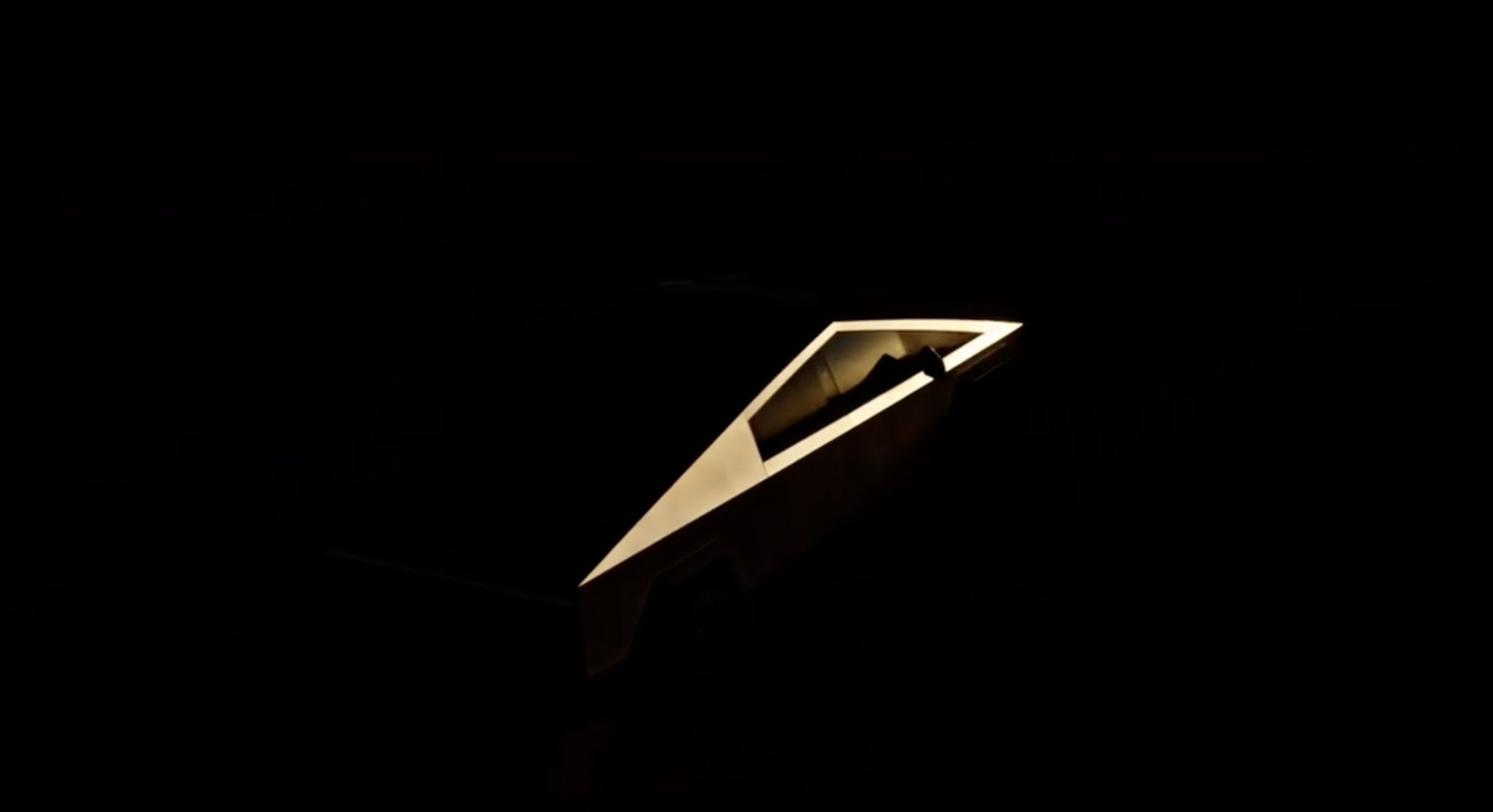
Tesla’s Q1 2025 earnings were released in an Update Letter, which was posted on the company’s Investor Relations website after markets closed today, April 22, 2025.
Tesla Q1 2025 Deliveries
Tesla’s first quarter vehicle deliveries fell short of expectations, with the EV maker delivering a total of 336,681 vehicles, comprised of 323,800 Model 3/Y and 12,881 other models, worldwide. Vehicle production was at 362,615 units in the first quarter, comprised of 345,454 Model 3/Y and 17,161 other models.
Tesla Energy continued its momentum in Q1 2025, with the division deploying 10.4 GWh of energy storage products during the quarter.
What Wall Street Expects
As noted in a Forbes report, expectations are high that Tesla will report a gain of $0.35 per share on $21.85 billion in revenue, though whisper numbers suggest that the company will only post a gain of $0.31 per share. Analysts polled by FactSet expect Tesla to see an EPS of $0.41 per share on revenues of $21.27 billion, as noted in an Investors’ Business Daily report.
Tesla’s Q1 2025 Results In a Nutshell
Following are highlights of Tesla’s Q1 2025 update Letter:
- Total Revenues: $19.3 billion
- Total automotive revenues: $13.967 billion
- Total GAAP gross margin: 16.3%
- Gross Profit: $3.15 billion
- EPS non-GAAP: $0.27 per share
- Free cash flow: $664 million
Key Updates:
Tesla’s total revenue decreased 9% YoY to $19.3 billion YoY. This was due to a decline in vehicle deliveries, in part due to the new Model Y changeover and reduced vehicle average selling price (ASP), among other factors.
Tesla is still profitable, though operating income decreased 66% YoY to $0.4 billion. This also resulted in a a 2.1% operating margin. Tesla’s profitability in the first quarter was affected by reduced vehicle ASP, a decline in vehicle deliveries, and an increase in operating expenses driven by AI and other R&D projects partially offset by a decrease in SG&A, among other factors.
Tesla’s quarter-end cash, cash equivalents and investments stand at a healthy $37 billion. The sequential increase of $0.4 billion was primarily the result of positive free cash flow of $0.7 billion.
Below is Tesla’s first quarter 2025 Update Letter.
TSLA-Q1-2025-Update by Simon Alvarez
This article is being updated.
-

 News2 weeks ago
News2 weeks agoI took a Tesla new Model Y Demo Drive – Here’s what I learned
-
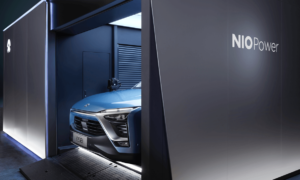
 News2 weeks ago
News2 weeks agoNIO Hong Kong shares rise as CATL eyes stake
-

 News2 weeks ago
News2 weeks agoElon Musk’s X tightens rules on parody accounts
-
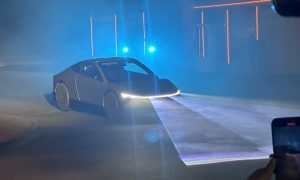
 News2 weeks ago
News2 weeks agoTesla cleared of some claims in Blade Runner lawsuit
-
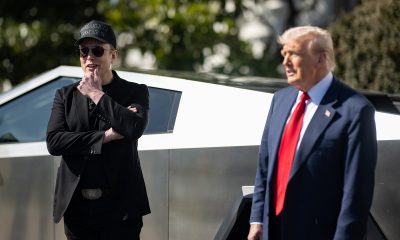
 News2 weeks ago
News2 weeks agoElon Musk reportedly appealed to Trump over aggressive tariff policy: WaPo
-
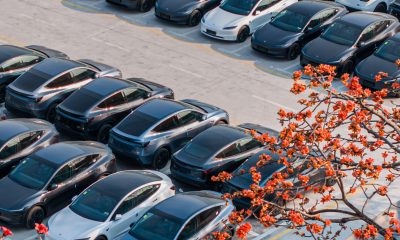
 News2 weeks ago
News2 weeks agoTesla China focuses on exports as Q2 begins
-
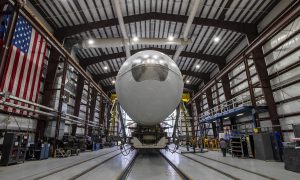
 News2 weeks ago
News2 weeks agoSpaceX takes over Space Force satellite mission from ULA
-
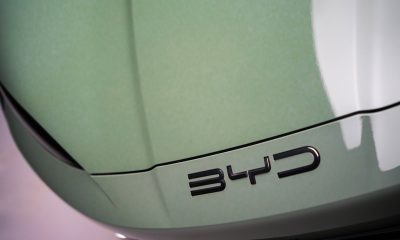
 News2 weeks ago
News2 weeks agoIndia blocks BYD investments amid China concerns

